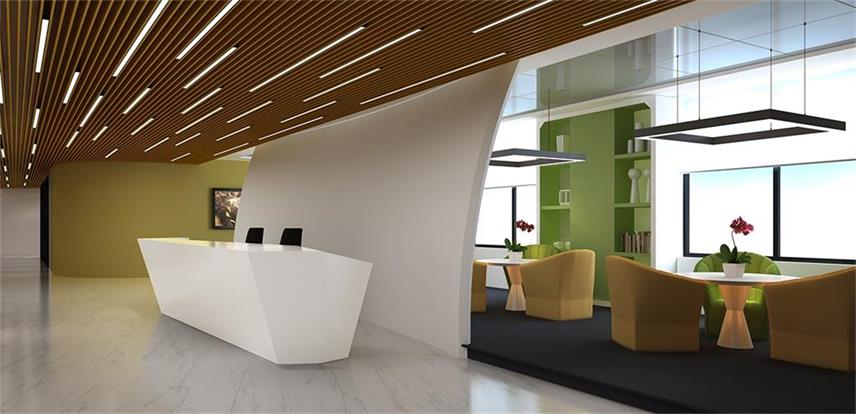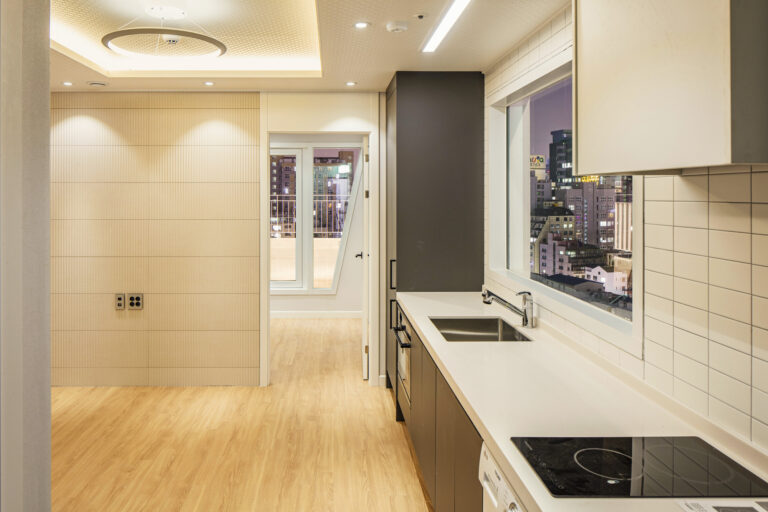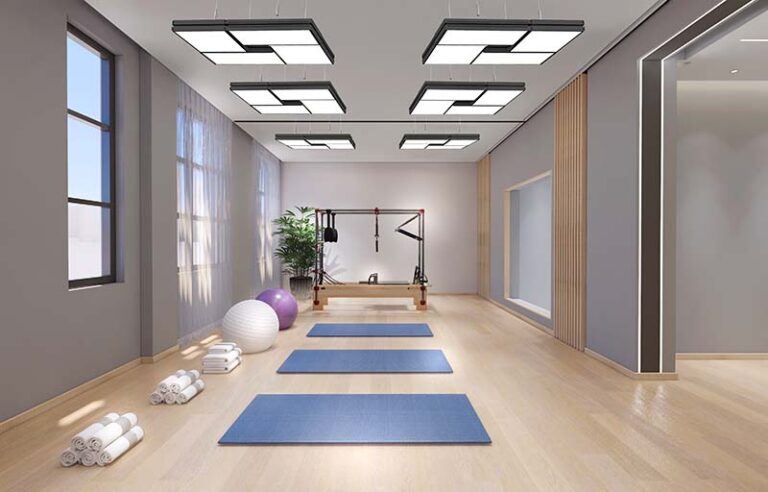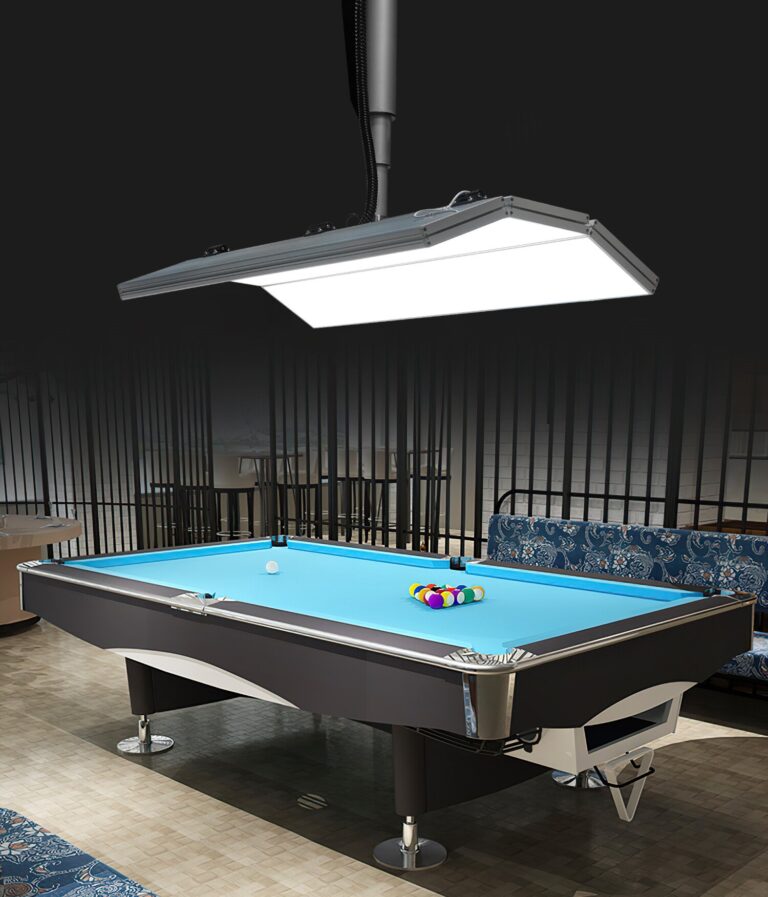LED lights are an excellent choice for any workplace. They are efficient, long-lasting, and provide high-quality illumination. They can also be used in various ways to enhance the look of your workspace. You can increase productivity and employee satisfaction by using LED lights in your office. They are more efficient, durable, and versatile than other lighting options.

Founded in 2007, HLLED is a national manufacturer of high-tech LED profiles that are CE-certified and ROHS-compliant.HLLED has provided LED office lighting solutions to customers in over 100 countries and thousands of large-scale projects worldwide. Let’s dive into why LED lighting is an excellent choice for office spaces and how to choose the perfect setup for your needs.
Why Choose LED Lighting for Your Office?
LED (light emitting diode) technology has revolutionized how we light up spaces. For office environments, LED lighting solutions offer a variety of compelling benefits:

LED lights use much less power than traditional lighting options, which can help you save significantly on energy bills. Traditional lamps only have a luminous efficacy of around 20-60, whereas LEDs can achieve a luminous efficacy of over 100.
Lifespan:LED lamps last longer than traditional lamps and can be used for tens of thousands of hours, so you won’t have to replace them as frequently. Most of HLLED’s products come with a 3-year guarantee.
Light Quality:LED lights offer a broad range of color temperatures and produce high-quality light. This helps to reduce eye fatigue and creates a more comfortable working environment. Additionally, there are anti-glare designs available.
Eco-friendly:LED lights are a more eco-friendly choice because they do not contain any harmful substances and help reduce carbon emissions.
Here’s the result of an experiment:
White LED lights emit most of their light in the visible spectrum, making them highly efficient, with a luminous efficacy of up to 150lm/(2010). In comparison, incandescent lamps have a luminous efficacy of 12lm/W and last fewer than 2,000 hours, while spiral energy-saving lamps have a luminous efficacy of 60lmW and a life span of fewer than 8,000 hours. T5 fluorescent lamps have a luminous efficacy of 96lmM and a life span of around 10,000 hours. The luminous efficacy of a 5mm white LED can theoretically exceed 1501m/W, and its life span can be greater than 100000 hours.
How Do LED Office Lights Improve Productivity and Energy Efficiency in Commercial Spaces?
LED office lights offer significant improvements in both productivity and energy efficiency within commercial spaces. Here’s a closer look at how they achieve this dual benefit:
Boosting Productivity
- Enhanced Focus and Comfort: LED lights minimize glare, which reduces eye strain and helps employees maintain better focus. This is especially beneficial in environments where prolonged screen time is common.
- Circadian Rhythm Support: Many LED systems are color-tunable, meaning they can adjust their color temperature throughout the day. This dynamic lighting mimics natural daylight patterns, supporting healthy circadian rhythms and improving overall well-being.
As a result, employees are likely to feel more alert and energized throughout the workday.
Increasing Energy Efficiency
- Lower Energy Consumption: LED fixtures consume significantly less energy than traditional lighting solutions. They can cut energy use by up to 90%, particularly when paired with smart controls. This translates into substantial cost savings on energy bills.
- Temperature Management: LEDs emit very little heat compared to incandescent or fluorescent lights. This not only reduces the cooling load on HVAC system
- Smart Controls: Advanced lighting systems incorporate smart controls like daylight harvesting and occupancy sensors. Daylight harvesting adjusts artificial lighting based on the amount of natural light available, while occupancy sensors ensure lights are only used when rooms are occupied.
Both features further enhance energy efficiency.
Additional Benefits
- Longevity: LEDs have a longer lifespan compared to traditional bulbs, reducing the frequency and cost of replacements.
- Eco-Friendly: With lower energy consumption and reduced waste, LEDs contribute to a smaller carbon footprint for commercial buildings.
In conclusion, LED office lights are a powerful tool for enhancing productivity and energy efficiency in commercial spaces. By creating a more comfortable and dynamic lighting environment, they support employee well-being and deliver substantial energy savings.
The office LED lighting program needs to focus on the key issues
To fully reap the benefits of LED office lighting, the following factors must be considered:
Brightness and Color Temperature
When creating a workspace, choosing the proper brightness and color temperature is essential. For offices, a color temperature between 4,000K and 5,000K is often recommended. This provides a bright, neutral light that resembles daylight.Getting this right can help you have a comfortable and productive workspace.
Direct and Indirect Lighting
Combining direct and indirect lighting is best to create a well-lit space. Direct lighting is ideal for task-oriented work, while indirect lighting can enhance the overall ambiance of an office.This combination will reduce glare and shadows, resulting in a more evenly lit workspace.
Task-specific lighting
Different different areas of an office may need specific lighting solutions. For instance, adjustable desk lamps can provide targeted light for tasks that require precision.Meanwhile, conference rooms might benefit from dimmable LED fixtures that can be adjusted for different meeting needs.
Lighting Controls
Integrating intelligent lighting controls, such as occupancy sensors and dimmers, can further improve energy efficiency and allow customization of lighting settings to adapt to the specific needs of the office throughout the day.
Design and Aesthetics
LED lighting offers many design options, from sleek and modern fixtures to more traditional designs. Choosing the right style can complement an office’s interior design and help create a more attractive workspace.
How Many Lumens Are Needed for Office Lighting?
To achieve ideal office lighting, understanding lumens is crucial. Lumens directly measure the amount of visible light emitted by a source. Here’s a breakdown to guide you:
- Reading and Writing Tasks: Approximately 50 to 75 footcandles are needed. This translates to about 500 to 750 lumens per square meter.
- Computer Work: Additional lighting is often necessary. Add about 20 to 50 more footcandles, which equals 200 to 500 extra lumens per square meter.
Factors Affecting Lumens Requirement
- Room Size: Larger spaces need more overall lumens.
- Wall Color: Darker walls absorb more light, requiring higher lumens.
- Light Orientation: The direction and focus of light fixtures can impact how much light is needed.
For precise calculations, consider using lumen calculators available from various lighting companies. These tools can help tailor the lumen output to your specific office setup, ensuring comfortable and efficient illumination.
Implementing your LED office lighting solution
To upgrade your office’s LED lighting, working with a lighting professional who can assess your current lighting situation, suggest improvements, and help you choose the right fixtures and controls for your workspace is essential. This will ensure that your lighting design meets your office’s needs, improving efficiency and comfort.
Conclusion:
If you’re considering upgrading your office lighting to LED, working with a professional who can help you design the lighting system to meet your needs is essential. A lighting expert can evaluate your current setup, suggest improvements, and help you choose the right fixtures and controls to optimize lighting efficiency and comfort in your office.



